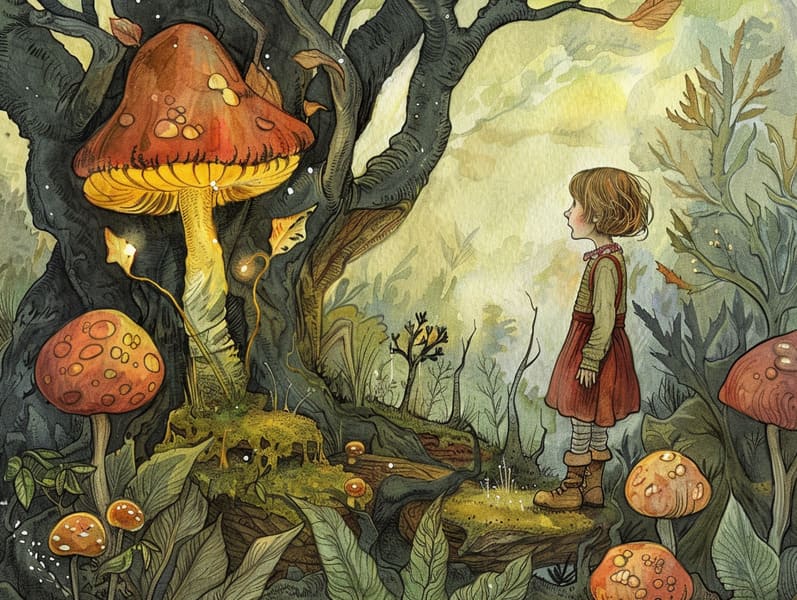Delving into the Background of Mythical Fairy Tales with the Eternal Captivation.
Delving into the Background of Mythical Fairy Tales with the Eternal Captivation.
Blog Article

Ancient fairy tales have legendary status. These narratives have been passed down from one generation to the next millennia before they were ever inscribed. They originated from a variety of societies, including Eastern traditions. They were initially narrated among older generations, often carrying themes and messages mirroring the societal norms and beliefs of the time.
The renowned Brothers Grimm, Jacob and Wilhelm, were among the first to compile many of these beloved tales. Their anthology, "Grimm's Children's Stories," included stories like "The Little Glass Slipper," "Hansel and Grethel," and "Snow-White and Rose-Red," which have since become hallmarks in the world of beloved fairy tales. Similarly, H. C. Andersen's fanciful tales, such as "The Mermaid's Tale," and "The Duckling's Story," have enchanted hearts worldwide, securing their place in the pantheon of classic fairy tales.
Even though they are old, traditional fairy tales remain as impactful as ever, especially as children's night stories. These enchanting tales are now available in many formats, including vibrantly illustrated books, magical animations, and web-based fairy tales.
Their persistent charm can be ascribed to several delightful features:
Crucial Morals: Ancient fairy tales often impart important moral lessons. Tales like "The Story of the Boy Who Cried Wolf" teach the benefit of sincerity, while "The Tortoise and the Hare" exemplify the qualities of resolve and humility. These stories offer little ones clear distinctions between ethical and unethical, building their moral compass in a gentle yet impactful way.
Compassion and Insight: Timeless fairy tales frequently portray heroes facing struggles and tests, fostering young readers to relate with their struggles and boost their triumphs. For instance, "Beauty and the Beast" shows us the necessity of appreciating inner worth to know the real character of a person, nurturing insight and perception.
Cultural Knowledge: Many old fairy tales are rich in the cultural contexts from which they blossomed. Exploring these stories can provide fascinating glimpses into different beliefs, promoting a sense of cultural respect and recognition.
Imagination and Innovation: The fantasy-filled elements in classic fairy tales—fairy godmothers—promote children’s fantastical thinking. These narratives move readers to extraordinary realms, invigorating imaginative thinking and a sense of marvel that endures a lifetime.
Traditional fairy tales are not only fascinating but also edifying. They act as captivating tools in nurturing various intellectual and emotional capacities in kids. When fairy tales are narrated, they enhance speech development by showing new linguistic elements and complex sentence structures. This practice also advances hearing abilities and attention span, as the young concentrate deeply, expectant to see what happens next.
Furthermore, deliberating the themes and characters of classic fairy tales can advance intellectual skills and problem-solving abilities. Kids are educated to identify patterns, expect results, and get cause and effect. These analyses also promote kids voice their thoughts and feelings, fostering their emotional intelligence.
In today’s modern era, the existence of free fairy tales online has made these fairy tales more reachable than ever. Online platforms and software share broad selections of famous fairy tales that can be read or listened on anytime, anywhere. Fairy tales told out loud are particularly well-received, sharing an charming way for young readers to take part in these fascinating tales. Spoken stories and spoken videos take characters and settings to life, often paired with enchanting music and soundtracks that intensify the storytelling experience.
The everlasting these guys appeal of traditional fairy tales lies in their ability to alter to contemporary times while keeping hold of their central values. Contemporary revisions of these tales often show more representative characters and modern settings, making them familiar to today’s audience. However, the essential messages of braveness, warmth, and rightness remain unchanged, continuing to reach audiences of all ages.
Ancient fairy tales also offer a sense of coziness and comprehensibility. They bring a neat narrative with a apparent beginning, middle, and end, often winding up with the solving of conflicts and the triumph of good over bad. This constancy can be comforting for little ones, allowing a sense of steadfastness in an unpredictable world.
Timeless fairy tales continue to enchant and teach new generations, maintaining their mystique and applicability in modern society. As nighttime stories for kids, they deliver up a perfect blend of magic and knowledge, encouraging moral values, empathy, and creativity. The existence of internet fairy tales and the in demand status of fairy tales spoken warrant that these classic narratives remain obtainable to new generations.
By sustaining and broadcasting these fairy tales, we continue to acknowledge the rich tapestry of fantasy and cultural heritage. Whether you are delving into a beautifully illustrated book, exploring a electronic library, or listening through an audiobook, the appeal of Grimm's fairy tales is always within reach. These tales illustrate of the timeless influence of narratives and its ability to bond us across time and space.
Whether you are experiencing a richly illustrated book, perusing a online library, or listening to an narrated book, the beauty of classic fairy tales is always within reach.
These stories convey of the endless effect of tales and its ability to tie us across time and space, forging a link that captivates and teaches alike.